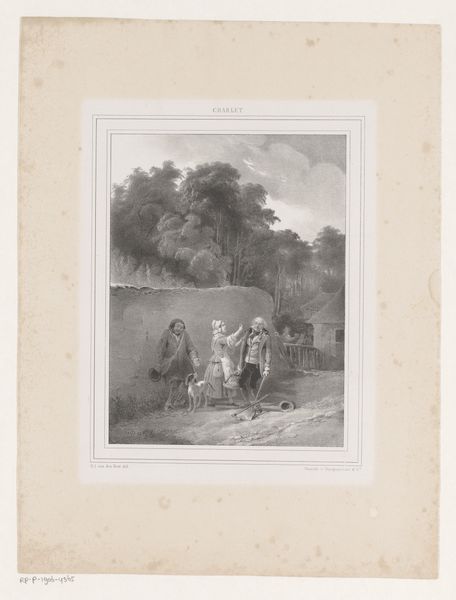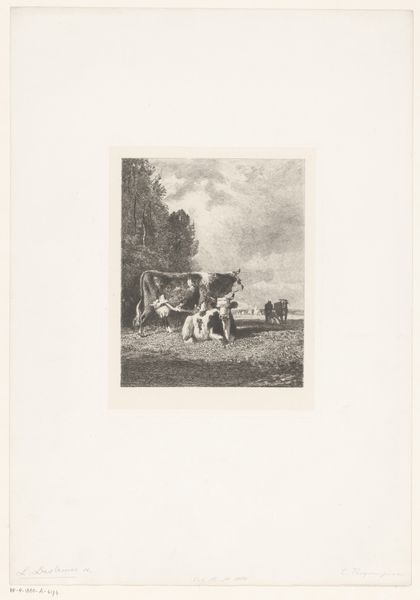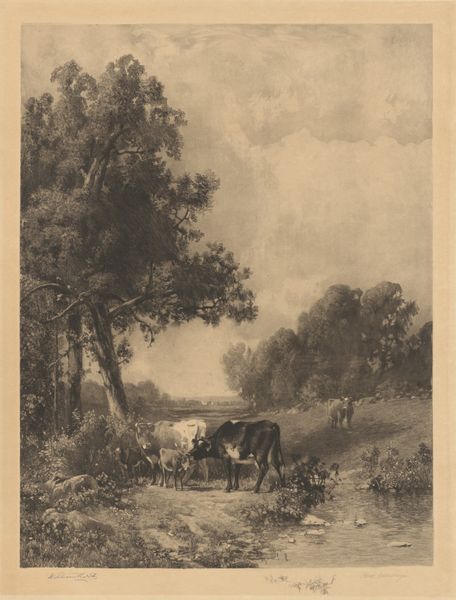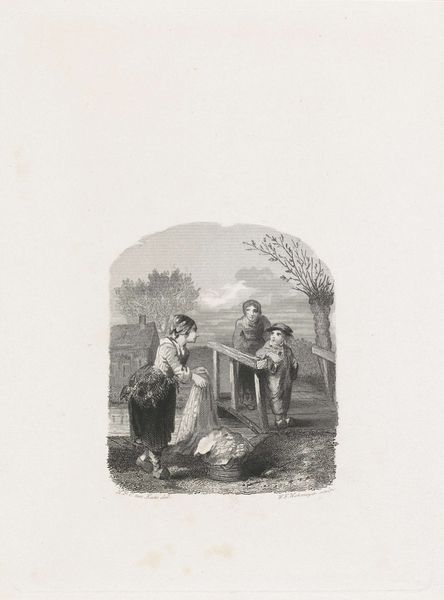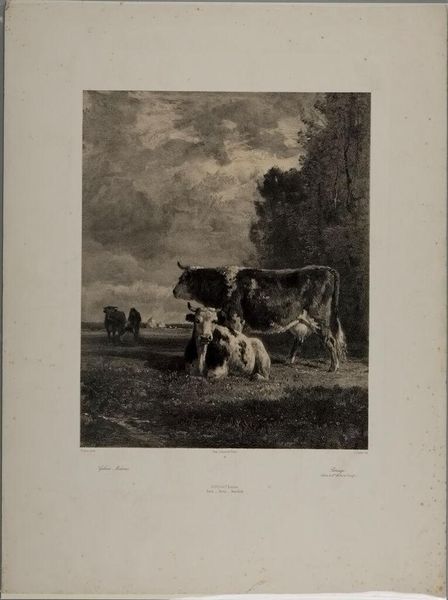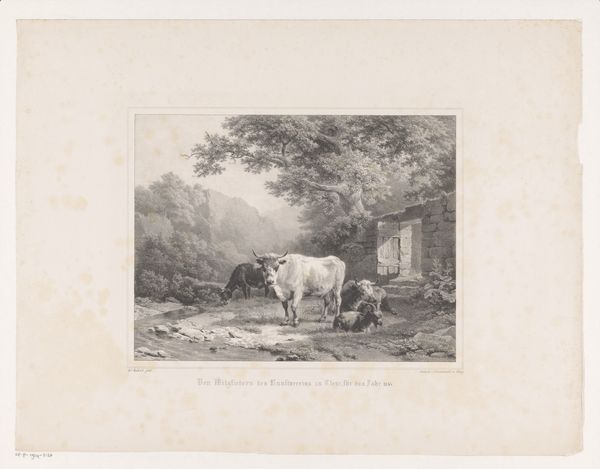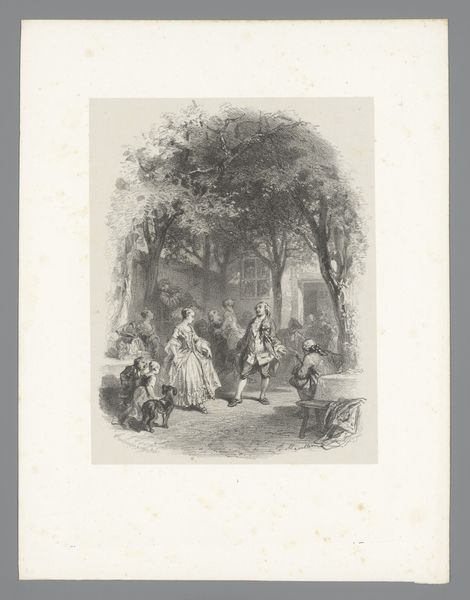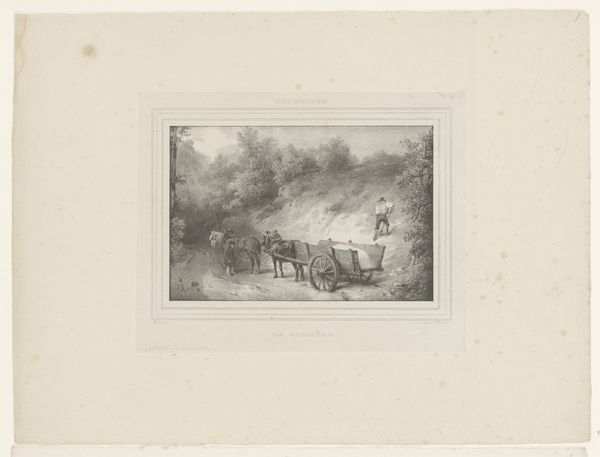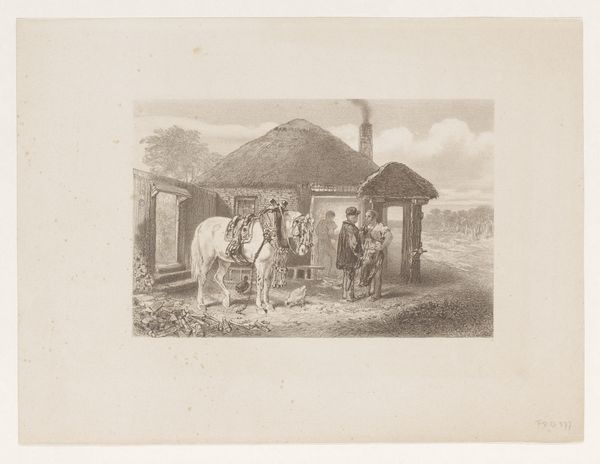
print, etching
#
dutch-golden-age
# print
#
etching
#
landscape
#
watercolor
#
realism
Dimensions: height 488 mm, width 400 mm
Copyright: Rijks Museum: Open Domain
This print of cows and a farmer in a field was made by Jules Didier, a French artist who lived in the 19th century. It's rendered in a technique called etching, which involves using acid to bite lines into a metal plate, which is then inked and printed. Didier’s picture of cows and their keeper might seem like a straightforward rural scene. But think about how the Industrial Revolution changed agriculture, and the relation between the countryside and the city. In the past, a pastoral image like this might have been evidence of great landed wealth, and self-sufficiency. By the time Didier made this print, it’s more like a nostalgic vision. The farmer seems to be working independently, but in truth, he's part of a larger economic system, producing milk or meat for consumption in urban centers. In the end, remembering the material and historical context of any work of art is a way of enriching our understanding and appreciation. It reminds us that seemingly simple images are often deeply connected to the social issues of their time.
Comments
No comments
Be the first to comment and join the conversation on the ultimate creative platform.
